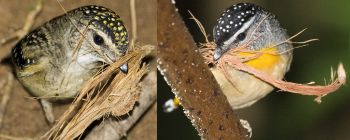Edit Me!
Why not edit me? llololdldldldldldl
Co
ou
rs
& more
Test
Testing! Steve 18:53, 20 August 2007 (UTC)
Tables
With Borders
Borders and Spacing
Cell Spacing Without Borders
No borders with check boxes
==
Last edited by LarryUsselman-34099 17:41, 2 October 2007 (UTC)
The Sandbox (Subsahara mythica) is a rare moth of the Sahel region of Africa. It is of course mythical!
video test
test gif
This is a test if this type of image will work in Opus. It seems to do, but only if the part of "thumbs" is omitted from our usual image code. Image in original context can be seen here.
Collared Scops Owl
A resident breeder in the Indian sub continent, South Asia right into China, the Collared Scops Owl (Ottus lettia), family Stygidae is woodland Owl. It seems to be different enough form Indian Scops Owl Ottus bakkomoena, to merit a separate species rank. It has small éars'- (head tufts) and has s buffish body with streaks. The facial disc is whitish or buff, and the eyes are orange or brown. There is a buff neckband. Sexes are similar. The flight is deeply undulating.
This species is nocturnal but it can often be located by the small birds that mob it while it is roosting in a tree. It feeds mainly on insects. The call is a quiet goog gook.
This species is chiefly found in northern India and is replaced by the very similar looking Oriental Scops Owl Otus sunia (recently split) towards the south of its range. It is very similar also to the slightly smaller Indian Scops Owl, O. bakkamoena. They are most easily separated in the field by their calls. (source Per. Obs, Wikipedia). 'Italic text'
Alternate voice recording coding used by Morlan in the wren page.
Song Clip Recording © by Joseph Morlan. Rosyth, Fife, Scotland, UK, 03 August 2018
Recommended Citation
BirdForum Opus contributors. (2020) Eurasian Collared Dove (Streptopelia decaocto). In: BirdForum, the forum for wild bird birds and birding. Retrieved 6 March 2020, from https://www.birdforum.net/opus/Eurasian_Collared_Dove
References
Lepage D. ({{subst:CURRENTYEAR}}) {{subst:PAGENAMEE}} in [http://www.bsc-eoc.org/avibase/ Avibase - The World Bird Database]. Retrieved {{subst:CURRENTDAY}} {{subst:CURRENTMONTHNAMEGEN}} {{subst:CURRENTYEAR}} Lepage D. (2020) Ref-Avibase in Avibase - The World Bird Database. Retrieved 13August 2020
The Definition of Migration (in my words)
The definition of migration (in my words) is when an organism or group of organisms travel a distance to another part of the world, for one reason or another. Many of these organisms, such as many waterfowl, have "pit stops" on the way to their destination, which make good places for making observations on those animals.
Beta Category:Indonesia Page
Overview
Indonesia, known formally as the Republic of Indonesia, is an island nation composed of a total of 17, 508 islands extending 5,150 km/3,200 miles between the Pacific Ocean and the Indian Ocean occupying an area between Asia and Australia.
The country is made up of five major islands and approximately 30 smaller groups of islands. However, only approximately 6,000 of those islands are inhabited.
It is a country of many mountains, some of which are over 4000 metres/13,123 feet. A significant percentage of them are active volcanoes. Some of the habitats here are tropical rainforests, jungles, and swampy mangrove areas. [1]
Islands of Indonesia
Major Island Groups
Indonesia has 5 major, or main, island groups.[1]
Sumatra
Sumatra comprises 473,606 sq. km/182,860 sq miles in area.
Java / Madura
Java / Madura comprises 132,107sq. km/51,006 sq miles in area.
West Java is the home of the Gede Pangrango National Park with all it has to offer.
Kalimantan
Kalimantan with 539,460 sq. km/20,8286 sq miles in area, makes up 2/3 of the island of Borneo.
Sulawesi
Sulawesi comprises 189,216 sq. km/73,056 sq miles in area.
Irian Jaya - Maluku Islands
Irian Jaya comprises 421,981 sq. km/162927 sq miles in area, is a part of the island of New Guinea.
Spotted Pardalote Sex Comparison Composite Test Page

Composite of two ChrisCharles Images
Photo © by ChrisCharles
Chatswood New South Wales, Australia
3 September 2006
The female and male of this species can be determined, in part, by the color of the spots on their heads.
The female has yellow/creamy spots while the male has white spots.
See the composite image for further clarification.
References
- Embassy of the Republic of Indonesia - https://www.embassyofindonesia.org/index.php/basic-facts/
Recommended Citation
- BirdForum Opus contributors. (2025) Sandbox. In: BirdForum, the forum for wild birds and birding. Retrieved 16 May 2025 from https://www.birdforum.net/opus/Sandbox
External Links
Maps
Experiment With Dual Gsearch Coding





